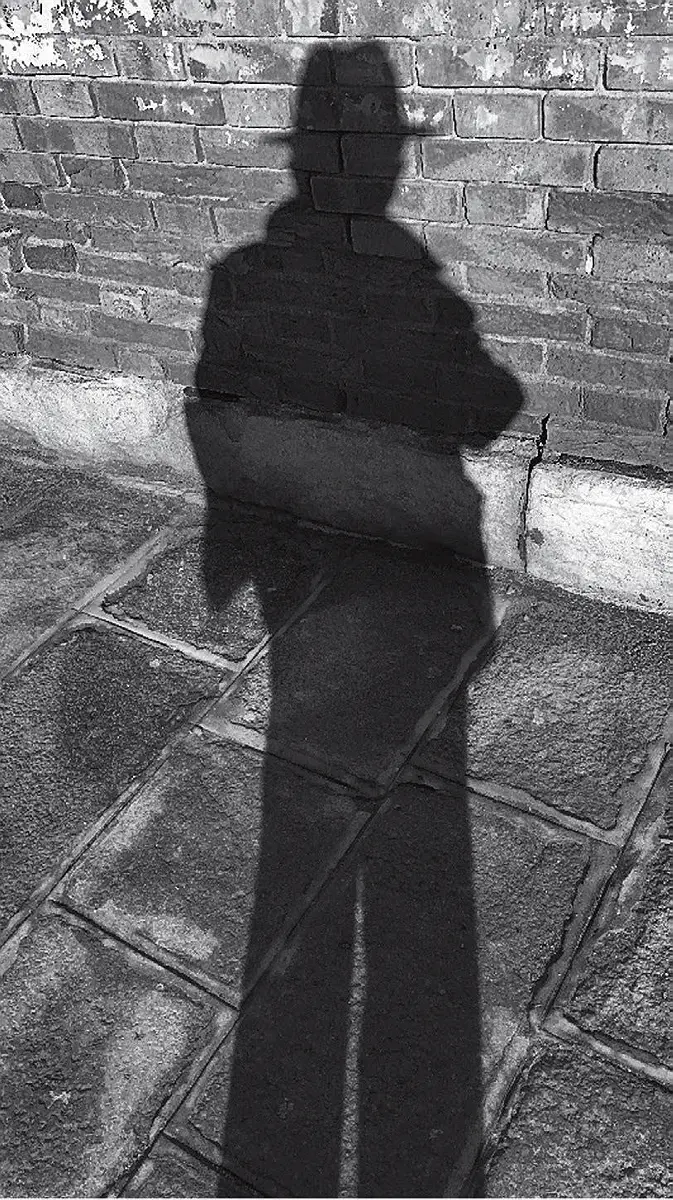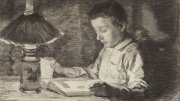When Werner Sollors was a boy, growing up among the ruins of postwar Germany, he had at best an indistinct idea of the distant country he would spend his adult life trying to understand. There was no sign yet that he would, decades later, become one of the most influential Americanists of his generation and redefine the way scholars now think of American literature and culture.
Rising to the highest academic ranks (at Harvard he was the Cabot professor of English literature and professor of African American studies), Sollors developed a knack for asking deceptively simple questions: “Why has ‘ethnicity’ not come to replace ‘race’ completely?” “Why has intellectual life in the United States become so exceptionally monolingual?” And he has provided probing answers to such and similar questions in a series of groundbreaking books, among them The Invention of Ethnicity (1989), Neither Black Nor White Yet Both (1997), and The New History of American Literature (2009), the latter co-edited with Greil Marcus, a revolutionary attempt to retell American literary history through a series of important “points in time.” The publication of The Werner Sollors Reader, 500 pages strong, compiled and introduced by Daniel G. Williams, A.M. ’97, offers a welcome occasion to revisit Sollors’s many-faceted interests and accomplishments.
For young Werner Sollors, “America” was the bar of “Marabou” chocolate given to him by the kind African American GI. It was the vision of endless plains and towering rocks traversed by handsome Native Americans and sturdy cowboys (many of German descent), which German children (the author of this review included) encountered in the vastly popular novels of Karl May, a nineteenth-century armchair traveler and ex-con who had never actually set foot on American soil (see Vita, March-April 2020, page 44). And it was the weird idiom May’s Indigenous characters spoke: “Apache,” a guttural gibberish May had concocted to spice up his dialogues—the first “American language” Sollors had studied, as he joked in a rare moment of autobiographical indulgence.
Whatever the reasons, his curiosity was piqued. He went on to earn his Ph.D. in American literature at the Freie Universität Berlin with a dissertation on the radical black playwright LeRoi Jones (Amiri Baraka), and thus on a topic as far removed as can be from those early Western fantasies. He moved to New York and began teaching at Columbia. While there, he had a revelatory experience at his son’s daycare center, where the walls of the bathrooms were covered with inscriptions in many different languages—the mundane beginning of a brilliant career in which Sollors became one of this country’s most eloquent interpreters, a descendant of a long line of expat observers, from Hector St. John de Crévecoeur and Alexis de Tocqueville to Hannah Arendt. “American identity,” he wrote in 1982, with a clarity that is often available only to the outsider, has been “bent on defining itself against something un-American or not-quite-American or not-as-American-as-thou.” In his work, Sollors set out to offer a corrective to this view, and he did so as a scholar as well as a teacher.
At Harvard, where Sollors worked from 1983 until his retirement in 2014, he advised more than 70 dissertations and informally mentored many others (including the editor of this Reader). A soft-spoken, perennially unruffled lecturer, impeccably attired in coat and tie (sometimes a bowtie), equipped with sheer-encyclopedic knowledge of many subjects and ready to tackle many more. With his English department colleague Marc Shell, he founded the Longfellow Institute, a center for the study of non-English American literatures, named in tribute to the nineteenth-century Harvard professor and poet Henry Wadsworth Longfellow, who had once called for an American literature that was a “composite” of all the immigrant voices in America. Among the most visible results of the Institute’s work were The Multilingual Anthology of American Literature (2000) and American Babel: Literatures of the United States from Abnaki to Zuni (2002), edited by Shell.
Although Sollors has held visiting professorships and given lectures at universities all over the world, he is, and has remained, famously self-effacing, a contradiction wonderfully captured in the dust jacket of The Werner Sollors Reader. It features a photograph of his own shadow, taken by Sollors himself: a dapper black shape topped by a stylish hat, projected onto ancient paving stones and against an old brick wall in Venice.
The same understated elegance also marks the essays and book chapters collected in the Reader. A typical Sollors essay comes with a tail of scholarly notes attached that may be as long as the piece itself. But if you turn to his texts, you’ll discover that he wears his learning lightly, strenuously avoids academic jargon, and is not averse to the occasional folksiness. Do you still believe in “neat ethnic distinctions?” he once asked his readers. “Go to the 47th Street Camera Shop,” a store “with the most international clientele imaginable,” and see if you can hold on to your categories. (The shop closed in 1997).

| COURTESY OF WERNER SOLLORS
Above all, Sollors revels in the delight of being able to share all the amazing, out-of-the-way facts he has uncovered. Want to read a novel or story by a Norwegian American writer? Try Drude Krog Janson’s En Saloonkeeper’s Datter (1887) or Dorthea Dahl’s “Kopper-kjelen” (The Copper Kettle, 1930), published in the Chicago Norwegian-language literary journal Norden (1930). Interested in Chinese American writing, in Chinese? Look no further than Yi Li (Pan Xiumei), whose story “Duo Tai” (Abortion, 1979) captures the often-hellish life of immigrant Chinese laborers in San Francisco.
The different strands of his thinking always converge, in a cogent refutation of all exclusionary definitions of Americanness.
What this doorstop of an anthology proves is that no matter what topic Sollors turns to—the role of ethnicity in American literature, the benefits of multilingualism, the importance of interracial relationships in American culture—the different strands of his thinking always converge, in a cogent refutation of all exclusionary definitions of Americanness. In 1917, one of his Harvard predecessors, Barrett Wendell, the first English professor there to teach American literature, made no secret of his annoyance with upstart immigrants. He was particularly annoyed by Mary Antin, a Russian-Jewish immigrant and author of the 1912 autobiography The Promised Land. Writing to a friend, Wendell complained that Antin had “an irritating habit of describing herself and her people as Americans,” in distinction from, say, the likes of Professor and Mrs. Wendell, whose families had, he boasted, “been here for three hundred years.” Yet that is, according to Sollors, precisely the beauty of the American experiment, properly understood: that it makes room for that “irritating” immigrant habit of laying claim to their share of Americanness, even as they were holding on to their particular national traditions and languages.
Reading Sollors’s work is fun. It sweeps you along on journeys back and forth among different periods, languages, and genres, from the Babylonian Talmud to “Le Mulâtre” (The Mulatto, 1837) by Victor Séjour, written in French and now considered the first known African American short story, to the contemporary novel Open City (2011) by the Nigerian American writer Teju Cole. Sollors brings the same critical acumen that shapes his literary readings to cartoons, diaries, and photographs. Happily crossing genres as well as disciplines, his scholarship models for us a more generous, capacious America, never realized, a truly cosmopolitan multi-nation, “accepting all, tolerating all,” that the poet Walt Whitman liked to dream about.
One of the unexpected highlights of the Reader for me occurs in its discussion of the Middle-High German romance Parzival (c.1200-1210), by Wolfram von Eschenbach. Sollors zeroes in on the moment when the fair-skinned hero Parsifal meets a man in battle, whom he recognizes as his mixed-race (“piebald”) half-brother Feirefiz, the offspring of their father’s earlier marriage with the black Queen of Zazamanc. Removing their helmets, the two warriors embrace and kiss, “and hatred and wrath were slain here in a brotherly embrace”—a moment of interracial harmony that American writers have struggled to imagine. Sollors cites Eugene O’Neill’s play All God’s Chillun Got Wings, which caused an uproar when it was first performed in 1924, because in it, as the New York American fretted, “a white woman kisses the hand of her negro husband.” Comments Sollors, wryly: “works of interracial literature written elsewhere and a very long time ago have already imagined tales of black and white love and marriage.”
The Werner Sollors Reader vividly documents the spirit and drive of an intellectual who at 81 shows no signs of slowing down. In his retirement, Sollors has begun a series of photo essays about Venice, where he now lives. He calls these efforts “bagatelles” (literally, trifles), but there’s nothing trifling about them. In one of them, he discusses the Heftklammern, the “staples” that hold the crumbling lagoon city together (a term originally suggested to him by the historian Hayden White). These are iron clamps or anchors—straight, sinuous, and angular, plain or complexly ornamented—which the attentive visitor finds hammered into the walls of Venetian palazzi, churches, and bridges: small, easily overlooked reinforcements that, when you look out for them, pop up everywhere. A reminder, once again, that the stability of the whole may depend on the support of its smallest parts, each of them delightfully different, each of them relevant in its own way. Out of the Many, One—but, as Sollors has taught us, a manifold One.









